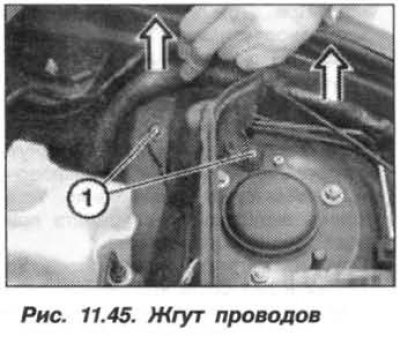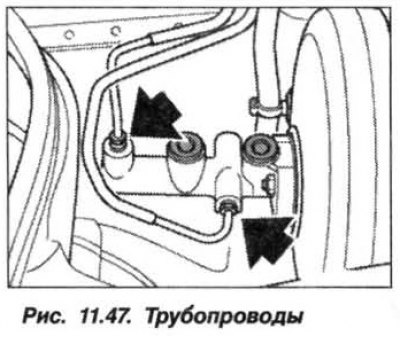
Disconnect pin «+» AB from the partition in the engine compartment, on the left and insulate. Unclip the hood release cable from the clips. Remove the wiring harness from the baffle by moving it up (arrows, fig. 11.45), unscrew the nuts (1).

Loosen the screws (1, fig. 11.46), remove the rubber hinges (2) windshield wiper and remove the partition, moving upwards (arrows).

Disconnect the brake pipes from the brake master cylinder (arrows, fig. 11.47).

Remove cover (1, fig. 11.48) pipeline outlets and disconnect the vacuum hose (3) from the brake booster.

Loosen the two self-locking nuts (3, see fig. 11.51) and remove the brake master cylinder from the brake booster (1).

Installation of the master cylinder should be carried out in reverse order, while it is necessary to replace the O-ring (2) circular section at the rear of the main cylinder on the docking surface with a vacuum booster.
Starting the brake master cylinder (2, fig. 11.49) into the amplifier (1) brakes, make sure that the booster rod is in the same plane as the master brake cylinder rod (2).

Install new self-locking brake master cylinder nuts and tighten to 26 Nm (2.6 kgf·m). Tighten the pipe union nuts to a torque of 14 Nm (1.4 kgf·m).
Attention! At the end of the work it is necessary to pump the brake system.
Repair of the master brake cylinder consists in replacing it as an assembly in case of a malfunction. The only element to be replaced are the brake fluid reservoir bushings.
